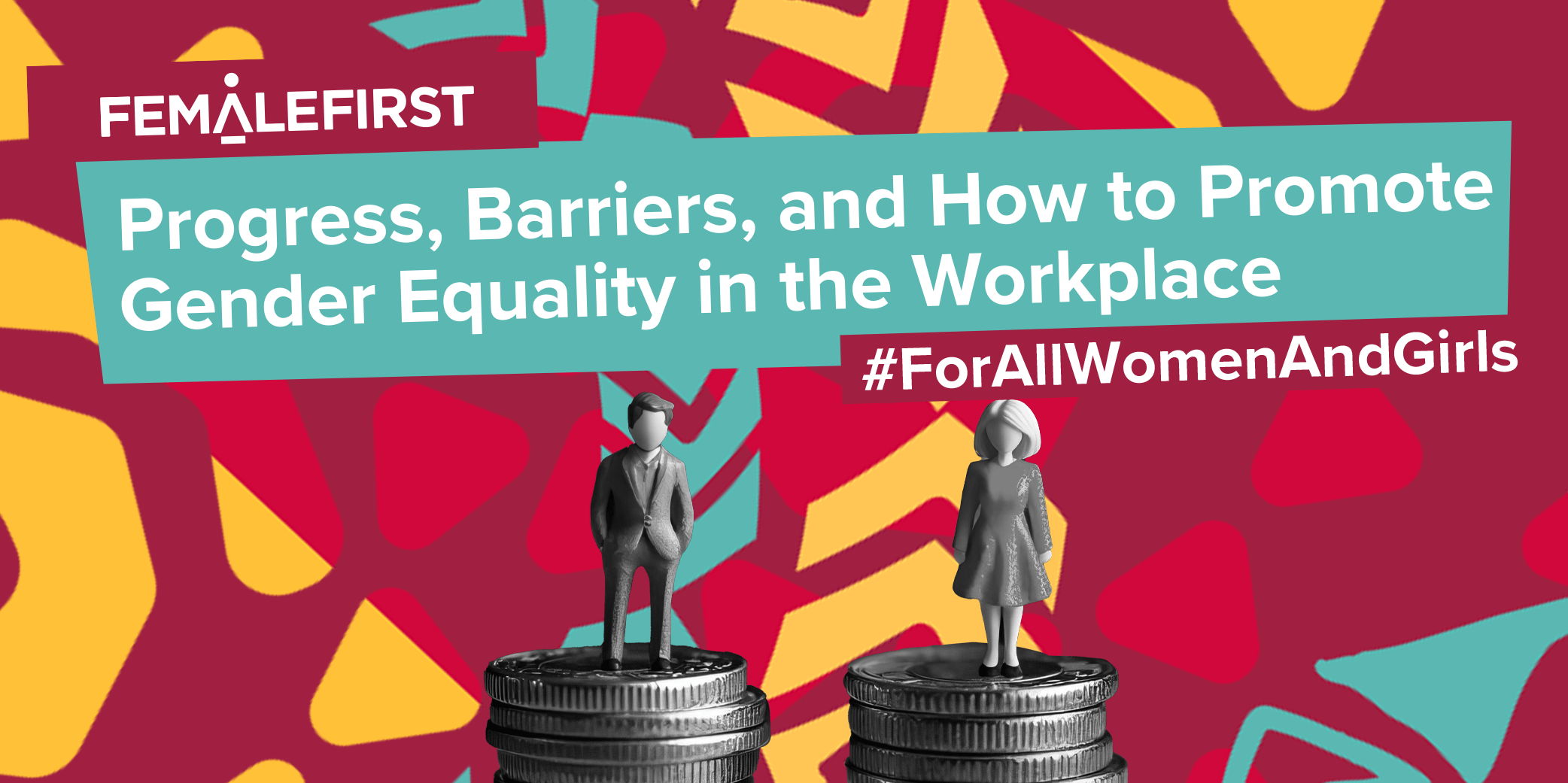The Beijing Declaration at 30: Progress, Barriers, and How to Promote Gender Equality in the Workplace

In 1995, 189 countries made a promise. When they unanimously adopted the Beijing Declaration and Platform for Action, they committed to a comprehensive roadmap for achieving gender equality. This landmark agreement lays out 12 critical areas of concern and details strategic objectives to advance women in each area. It was meant to transform our economies and societies to ensure women could participate fully and equally in all aspects of life.
Three decades later, progress has not erased the stark reality of inequality. This year, for International Women’s Day, UN Women published their Women’s Rights in Review 30 Years After Beijing report. It found that:
- Only 63% of women are in the labour force, compared to 92% of men
- Women still earn, on average, 20% less than men
- Women do 2.5 times more unpaid care work than men
- Women only hold 64% of the legal rights of men
- 772 million women work in the informal economy, in jobs that lack protection
- 59.5 million adolescent girls are missing out on education
- 10% of women and girls live in extreme poverty
Here, we look at the Women’s Rights in Review 30 Years After Beijing report and how private companies and employers like CTG can participate in the Beijing+30 action agenda.
Shaping the future of gender equality in 6+1
The report provides a clear roadmap for accelerating progress on women’s equality through the 6+1 framework: 6 action areas, and +1 to represent the need for youth to be involved in each area to achieve sustainable change. If met, these actions will address some of the highest barriers women face.
Though the action areas are broadly aimed at governments, NGOs and funding bodies, we break down how private companies and employers can adapt each action to promote gender equality in the workplace.
1. A digital revolution
To access decent work – now and in the future – women and girls need to be part of the digital revolution. Currently, almost 90% of jobs have a digital aspect. By 2030, digital access will have transformed over 60% of businesses. Soon, most jobs will require sophisticated digital skills, including the ability to work with generative Artificial Intelligence.
To stop the cycle of trapping women and girls in low-paid, informal and unstable work, closing the digital gender divide must be a priority focus. This requires not only equal access to digital technology, training and development, but also a shift in mindsets to create safer, more equal online spaces. Women must also be mobilised in creating technology and informing digital policy, to ensure that digital tools and spaces serve women and girls’ needs and interests equally.
What companies can do
Open access to digital technologies, include women in technological advances, solicit their feedback on digital tools, and create spaces where women can participate in digital societies without discrimination or harassment.

CTG’s HR software, Tayo, was developed to support and protect its staff in the field. Our digital team is constantly working to improve Tayo for ease of use and efficiency for all users.
2. Freedom from poverty
Empowering women to become financially independent is central to women’s equality. Without enough money and resources, women struggle to invest in the education and skills needed for better employment. Even looking for and applying to jobs uses resources that some women may need to save for food or childcare. Investments in social protections for women and high-quality public services can help free up resources for education, skills training and job-seeking.
Once they find jobs, women are also less likely to earn a fair wage, and more likely to invest their wages into their families. In 2024, the global gender pay gap was still 20% in formal work. Earning less means women accumulate less wealth over their lifetimes, making them more vulnerable to economic shocks that constrain their resources.
What companies can do
Invest in women by creating programmes and initiatives that promote women’s opportunities to access decent work. Provide options for flexible work hours, ensure all workers have contracts, close the pay gap and ensure equal access to development opportunities.
3. Zero Violence
Violence against women and girls carries steep economic as well as social cost. Injuries and trauma can lead to women and girls missing work or school, and controlling behaviour may prevent them from accessing opportunities altogether. In fact, violence against women and girls serves to deepen gender inequality across all spheres of life.
Almost all countries have passed or strengthened laws to counter violence against women and girls. Though rights-based laws help reduce the rates of gender-based crimes, there is still a lack of enforcement and support to ensure these laws have a sustained, long-term impact.
What companies can do
Back up national and international laws with policies that aim to protect women in the workplace, such as Prevention of Sexual Exploitation, Abuse and Harassment (PSEAH) policies. Create mechanisms for reporting and monitoring, such as an Ethics Committee and a robust Whistleblowing Procedure.
4. Full and equal decision-making power
To fully participate and build sustainable change, women must be involved in decision-making at every level of leadership. Without this, as both the Beijing Declaration and 30 Years After Beijing report make clear, the goals of equality, development and peace cannot be achieved.
When women are in leadership positions, they have the power to create opportunities, shape careers and empower others to develop. Research has also found that female leadership is good for business: companies with more women in their leadership are12 times more likely to rank in the top 20% for financial performance.
What companies can do
Create space for women’s voices in governance and teams by ensuring that women are represented at every level of decision-making, and that they are empowered to contribute meaningfully.

Creating opportunities for women to speak and participate in decision-making is a critical step in promoting gender equality in the workplace.
5. Peace and security
Since 2020, conflicts have nearly doubled across the world. Though evidence shows that women’s participation in peacebuilding creates more sustainable and inclusive solutions, women are routinely excluded from peace and security. In 2023, women were only 10% of negotiators, 14% of mediators and 27% of signatories in peace negotiations.
To forge more peaceful, resilient and prosperous societies for everyone, women need to be included and supported.
What companies can do
Support movements – both local and international – that enable gender-responsive humanitarian action and women’s inclusion in peace and security processes.
6. Climate Justice
As in conflict, women and girls are disproportionately affected by the impact of climate change. Climate change threatens to push 158.3 million more women and girls into poverty through, for example, its impact on informal work in sectors like agriculture – where women make up a majority of the labour force. It can also lower their life expectancy, increase food insecurity and raise the risks of gender-based violence.
However, a just transition to environmentally sustainable economies and societies could generate 18 million new jobs by 2030.
What companies can do
Support initiatives to arm women and girls with new skills to gain green jobs and create and/or participate in action plans for sustainable development. Ensure women are equally represented in initiatives that help build resilience to climate shocks and disasters.
7. Centring youth as the +1
The Beijing+30 action agenda adds +1 to centre the role of youth in achieving change. For each action, the report recommends including young women and girls to help drive action and shape the world of tomorrow.
What companies can do
Apart from promoting gender equality through the 6 actions, workplaces can provide opportunities for young women through internships, skills development and mentorship programmes.
Continuing the Beijing+30 action agenda
At CTG, we recognise that achieving gender equality is not only a moral imperative but also a strategic priority. It is essential for business growth, prosperous societies, and resilient communities. 30 years after the Beijing Declaration, we are working to address the high barriers to equality through our Female First initiatives, robust policies and shared value agenda, to drive gender equality across our organisation.
We invite you to explore our women’s empowerment initiatives and contact us to learn more about our people, project management and logistics solutions.
Together, we can dismantle barriers, create opportunities, and build a world where gender equality is possible.
